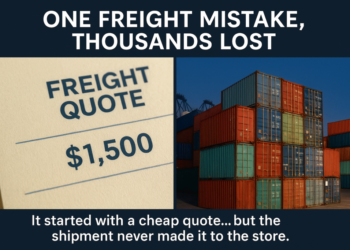Let’s be honest: traditional SEO is officially running out of steam. Those old habits—keyword stuffing, backlink obsession, endless manual audits—were once great, but today’s algorithms are looking for something much smarter, much faster, and infinitely more adaptable.
This is exactly where AI SEO walks in. It’s not just a cool new toy; it’s the turbocharger for your growth engine. The companies who are already using AI-driven SEO workflows are reporting over 60% higher ROI than everyone else. They aren’t just getting higher rankings; they’re converting more leads, pumping out quality content at record speed, and spotting the next big search trend before competitors even wake up.
The message is clear: AI isn’t coming to replace SEO—it’s here to make it legendary.
If you play your cards right with your investment, you’ll get more than just “more traffic.” You’ll get real business outcomes: huge revenue lifts, a sharp drop in acquisition costs, and you’ll hit the top ranks faster than you thought possible.
Aligning Business Goals with AI SEO Metrics
Here’s the biggest mistake most brands make: they view AI SEO as a simple “ranking project,” not the sophisticated “revenue system” it should be.
To deliver actual business results, you have to lock your marketing goals and your AI SEO metrics together from Day One.
Define the Goals That Actually Matter
- Organic revenue growth, not vanity traffic counts.
- Reduced customer acquisition cost (CAC).
- A much higher customer lifetime value (LTV).
- A bigger share of voice in both classic search and emerging AI-powered results.
Connect SEO Metrics to Business Metrics
Think of it as a logical sequence, a powerful chain reaction:
AI SEO investment → killer visibility → better qualified traffic → higher conversions → real ROI.
So, stop obsessing over useless metrics like “ranked #3 for keyword X.” Start focusing on proven business outcomes like “a 25% lift in organic conversions from transactional keywords.” That’s the AI difference—it doesn’t just show you data; it helps you truly decode the user’s intent, value, and bottom-line impact.
Building the Right Tech Stack and Automation Pipeline
AI SEO isn’t something you can just plug in and walk away from. It’s a structured, living ecosystem that requires the right tools layered perfectly together.
The Core Stack
- Crawling and Indexing Tools – The nuts and bolts. They nail crawl budget optimisation, instantly fix indexing flaws, spot orphan pages, and ensure your most valuable pages are always visible to search engines.
- Semantic Keyword Engines – These are AI gold mines, uncovering topic clusters, latent semantic indexing (LSI) terms, and the high-value intent queries your competitors miss.
- Content Intelligence Tools – They automate content briefs, meta tags, schema markups, and proactively optimize everything for entity-based search.
- Automation Layer – The conductor! It ties all your workflows together to auto-trigger audits, schedule publishing, manage links, and track performance without you lifting a finger.
- Analytics and Attribution Setup – The truth teller. It fuses your SEO data, GA4, and CRM to directly link organic actions to sales, leads, and customer retention numbers.
Understanding the Pipeline
Your AI SEO system needs to act like a smart, self-improving organism:
- Ingest data (keywords, performance, user behavior).
- Process it through AI models (classify intent, predict rankings, highlight gaps).
- Generate insights (content briefs, linking maps, technical fixes).
- Execute automatically.
- Feed results back into the model for continuous, smarter iterations.
Your technical foundation is the secret sauce for long-term growth. Without a solid pipeline, AI SEO is just another fancy report.
Turning Data Into Actionable SEO Intelligence
AI SEO eats data for breakfast, lunch, and dinner—but raw data is just noise. The real genius lies in how you process and act on it.
Step 1: Collect the Right Signals
- Search query trends (especially new voice and AI-generated ones).
- Keyword clusters that clearly show emerging user intent.
- Pages that are rapidly losing rank or decaying over time.
- Behavioral signals—engagement, dwell time, and click-through rates (CTRs).
Step 2: Extract Insights
AI models can catch patterns we would overlook—which topics are underperforming, where content is thin, which queries are spiking, and which keywords are delivering the highest conversion value.
Step 3: Build a Strategy on Insights
- Attack high-intent clusters that convert, not just the ones that rank easily.
- Build foundational pillar pages supported by detailed cluster content (the hub-and-spoke model).
- Use AI to quickly refresh and supercharge outdated pages before they hurt your standing.
- Prioritize what drives revenue, period.
Never forget: data without insight is noise; insight without action is a wasted opportunity.
Execution Blueprint: AI-Powered Tactics That Deliver
Let’s get out of the meeting room and onto the battlefield—this is where your business results are actually made.
Smarter Content Creation
- Use AI to draft detailed content briefs that include intent, internal link blueprints, and semantic entities.
- Let AI generate a solid first draft—but a human must always edit to inject unique personality, expertise, and emotional connection.
- Systematically update old, high-value pages: inject fresh data, refine the structure, and make them AI-search friendly.
Technical Optimization
- Automate site audits to instantly catch broken links, duplicate tags, or redirect loops.
- Optimize crawl paths and internal linking by using AI-based link graph modeling.
- Implement structured data (schema markup) across all your content for maximum machine readability.
Adapting for AI Search
Generative search and conversational AI are fundamentally changing how people find answers.
This is the dawn of GEO—Generative Engine Optimization.
Your content needs to appear in AI answers and summaries, not just the ten blue links. To pull this off:
- Structure your content with clear entities and short, highly scannable facts.
- Build real topical authority through quality backlinks and authoritative citations.
- Ensure your brand voice is so strong it comes through even in a machine-summarized answer.
Conversion Optimization
AI SEO is a visibility tool, but its real power is turning that visibility into cash.
- Use behavioral data to dynamically tailor on-page content, CTAs, and offers.
- Map every organic session to a conversion event (lead, sign-up, sale) and measure the precise actions that boost your bottom line.
Cost and Efficiency Gains
AI can take over about 70% of routine audits and content prep—that’s a huge time saving you get every month. That freed-up time should be redirected into deeper research, scaling content clusters, or more personalized outreach.
Measuring ROI Like a Pro
Time to talk brass tacks—the numbers that prove your investment is working.
The ROI Equation
ROI = Gain from Investment – Cost of Investment × 100
Cost of Investment
The formula is simple, but your “gain” must be real: incremental revenue, verifiable cost savings, and lead value—not just traffic noise.
Benchmarks to Aim For
- Most successful brands see a positive SEO ROI within 6–12 months.
- B2B campaigns frequently deliver an ROI between 500–1000%.
- Companies using AI SEO generally report 60% higher efficiency and 3× faster time-to-rank.
Metrics That Matter
- Time-to-rank improvement (how fast new pages hit the top positions).
- Organic conversion rate uplift.
- Reduction in content production cost per page.
- Increase in share of voice across all search and AI results.
- Lifetime value of organic customers vs. paid customers.
Make Your Tracking Smarter
Build dashboards that visualize the entire revenue chain: content → traffic → engagement → conversions → revenue. Set up alerts for when ranking momentum slows or conversions dip. Clear data leads to confident, smarter scaling.
Common Pitfalls That Drain Results
Even the best plan can crash if you ignore these warnings:
- Chasing Rankings, Not ROI: Hitting page one is meaningless if those visitors don’t turn into paying customers.
- Ignoring AI Search Trends: If your content isn’t built for conversational AI and answer engines, you’ll disappear from the next-gen search landscape.
- Underestimating Technical Debt: Slow sites, crawl errors, and messy content will absolutely sabotage your AI SEO efforts.
- Skipping Attribution: Without spot-on analytics, you’re flying blind and will never know which efforts are making you money.
- Scaling Too Early: Pilot first. Prove the concept. Then scale. AI SEO is potent, but precision will always beat volume.
The Future: Generative Engine Optimization and Beyond
Search is evolving at light speed. Users are moving past “10 blue links” to AI-curated summaries and direct answers.
This shift has created a brand new discipline: Generative Engine Optimization (GEO)—the art of making your content easily discoverable, quotable, and instantly usable by the AI systems themselves.
To maintain your edge:
- Write content that is clean, factual, and incredibly easy for AI to parse.
- Build powerful third-party authority (citations, media mentions, reviews).
- Adapt quickly to voice search, zero-click results, and chat-based queries.
AI will increasingly choose which sources it features in its answers—and only brands with well-structured, credible, and data-rich content will win this game.
Conclusion
AI SEO is not a silver bullet; it’s a powerful force multiplier.
When it’s built on a rock-solid tech foundation, guided by ruthless business goals, and powered by smart automation, it transforms traditional SEO from a chore into a high-performance engine.
You’re not just guessing what Google or Gemini will favour—you’re predicting it, optimising for it, and quantifying the exact return.
The truth? Real business results from AI SEO come from consistent effort, continuous refinement, and data-driven action. The companies that see AI SEO as a long-term, strategic asset —not a quick fix —are the ones setting the pace for organic growth in this new era of intelligent search.
The future of search isn’t about navigating algorithms—it’s about deeply understanding human intent, delivering exceptional value, and scaling your intelligence. Do it right, and your AI SEO investment won’t just be marketing—it will be unstoppable momentum.
Meticulously crafted by the creative team at 88gravity.












































































